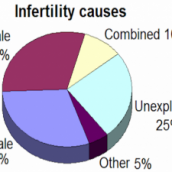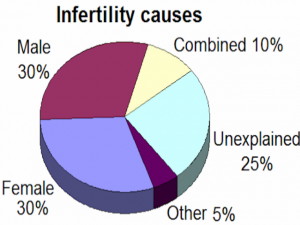Posted by unicorn jordan in Infertility Explained | 0 Comments
Infertility Statistics

Infertility is a very big word people are often uncomfortable talking about. Add Statistics and people will be running out the door in no time. This shouldn’t be the case though. Statistical information about sensitive issues such as infertility is a must-know for everyone, even if you are not experiencing infertility problems first-hand. Knowledge on broad topics never hurt anyone.As of last year, there are 7.3 million women in the country who are infertile and are unable of conceiving. These women came from the age bracket of 15-44 years of age. Studies and research done in 2002 showed that 11.9% of women (7.3 million) from the same age bracket received treatments for infertility.
are 7.3 million women in the country who are infertile and are unable of conceiving. These women came from the age bracket of 15-44 years of age. Studies and research done in 2002 showed that 11.9% of women (7.3 million) from the same age bracket received treatments for infertility.
Statistics has shown that 4.8% of women took fertility tests, while 6.1% got professional advice. Another 5.5% of women got treated to prevent miscarriage and 3.8% of women took drugs to help them in their ovulation problems. And a total of 1.1% went through artificial insemination.
Aside from the infertility problems on conceiving, women also have problems in carrying their pregnancy to its full term. In fact, 11.8% of women cannot carry a baby to its full term due to them having damaged fertility. 15.2% of women without children (age bracket: 35-39) availed of infertility treatments. A little higher for women between the ages of 30 and 34 (17.3%). Only 2.9% for the 15-29 age bracket received infertility treatments.
Based on these statistics, older women needed more infertility treatments compared to younger women. This is due to the fact that egg cells decrease as a woman gets older. Statistics has shown that 27.4% of women are infertile by the age of 40 to 44, while 22.6% of women are infertile by the age of 35 to 39. Only 16.9% of women are infertile by the age of 30 to 34 and only 11% of married women are infertile by the age of 15 to 29. Studying this information, we can see that age plays a big role in the success rate of infertility treatments. For example, the success rate for the process of in vitro fertilization varies, depending on the age of the patient. Which is why it is highly recommended that the process is done while the woman is still below her fortys for a higher success rate. Women 31 years of age get a success rate of 38%. Women 39 years of age get a success rate of 22%. On the other hand, women above the age of 43 get a success rate of 10% or less. To solve the problem in the success rate for older women, doctors recommend that the patient get an egg donor from a younger age bracket. Doing this will increase the success rate of the procedure to 45%.
Patients undergoing infertility treatments often feel alone in their problems and their situation, especially in a world where abortion and unwanted pregnancies are widespread. Information provided by infertility statistics help these people in a very big way. At the very least, they know that the numbers shown on the statistics represent people experiencing the things they are also going through. Infertility statistics also play a big role in the decision of doctors and in finding the right fertility plan for their patients.
